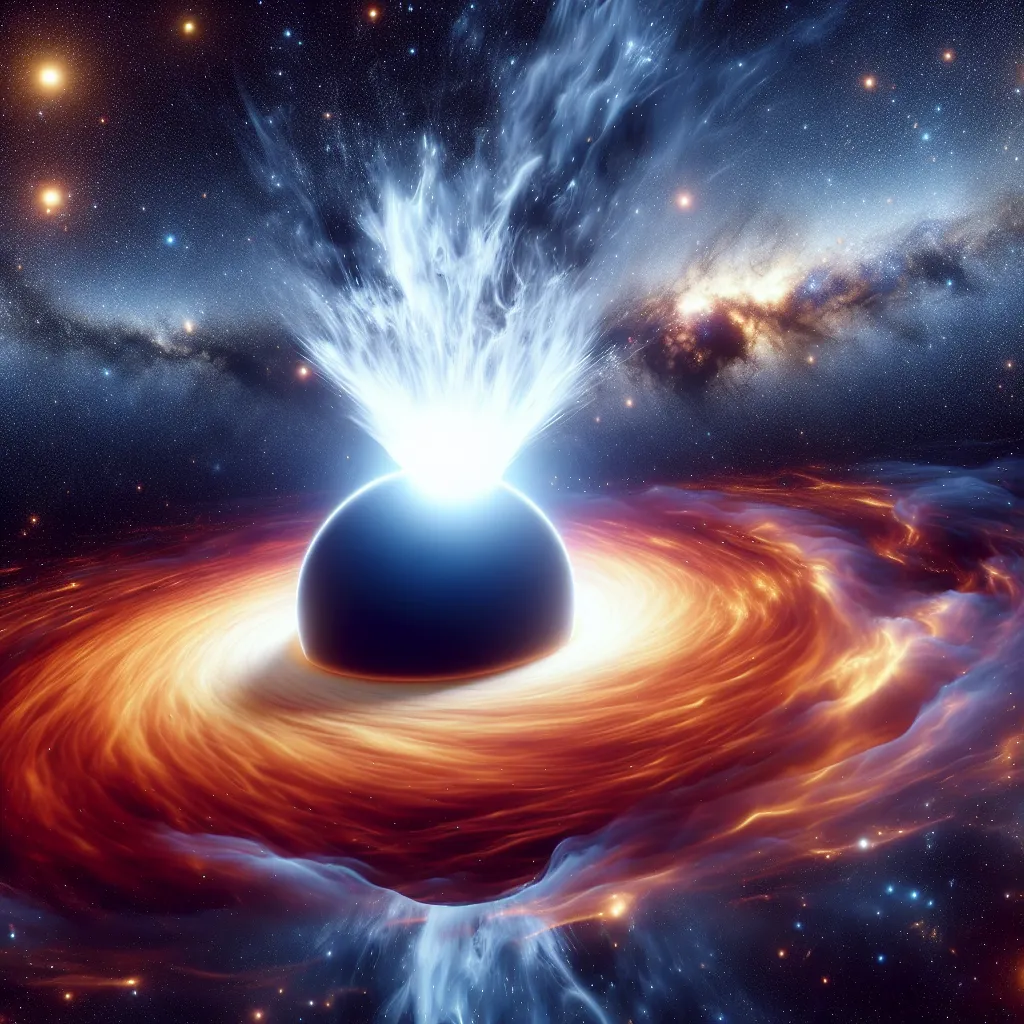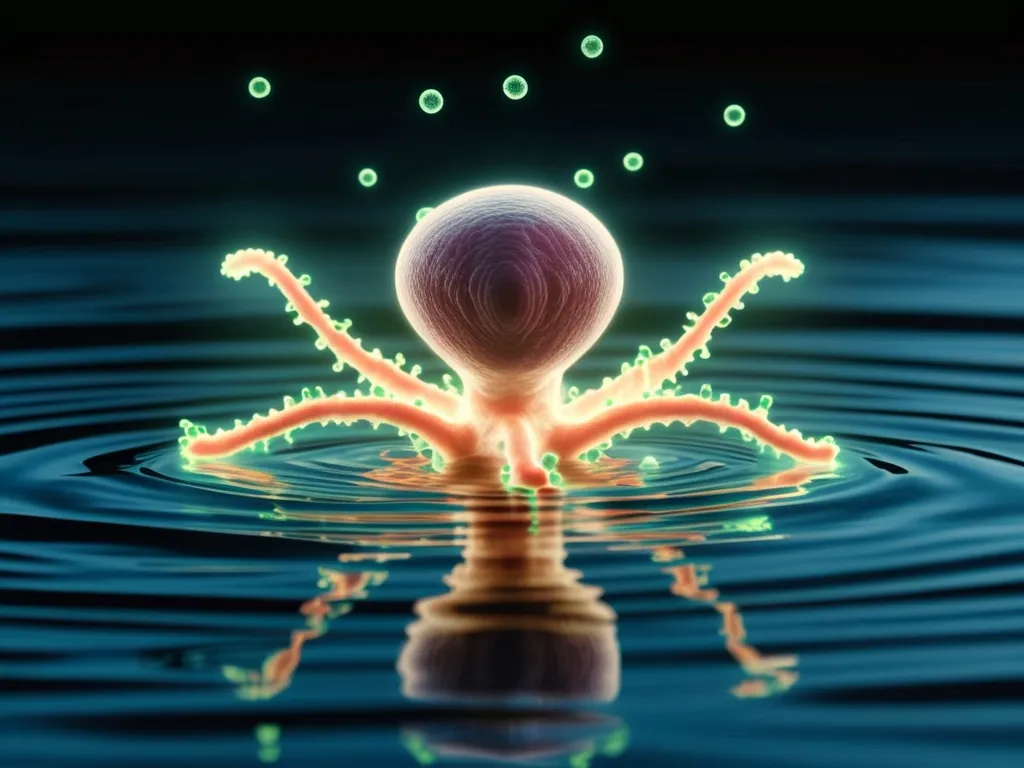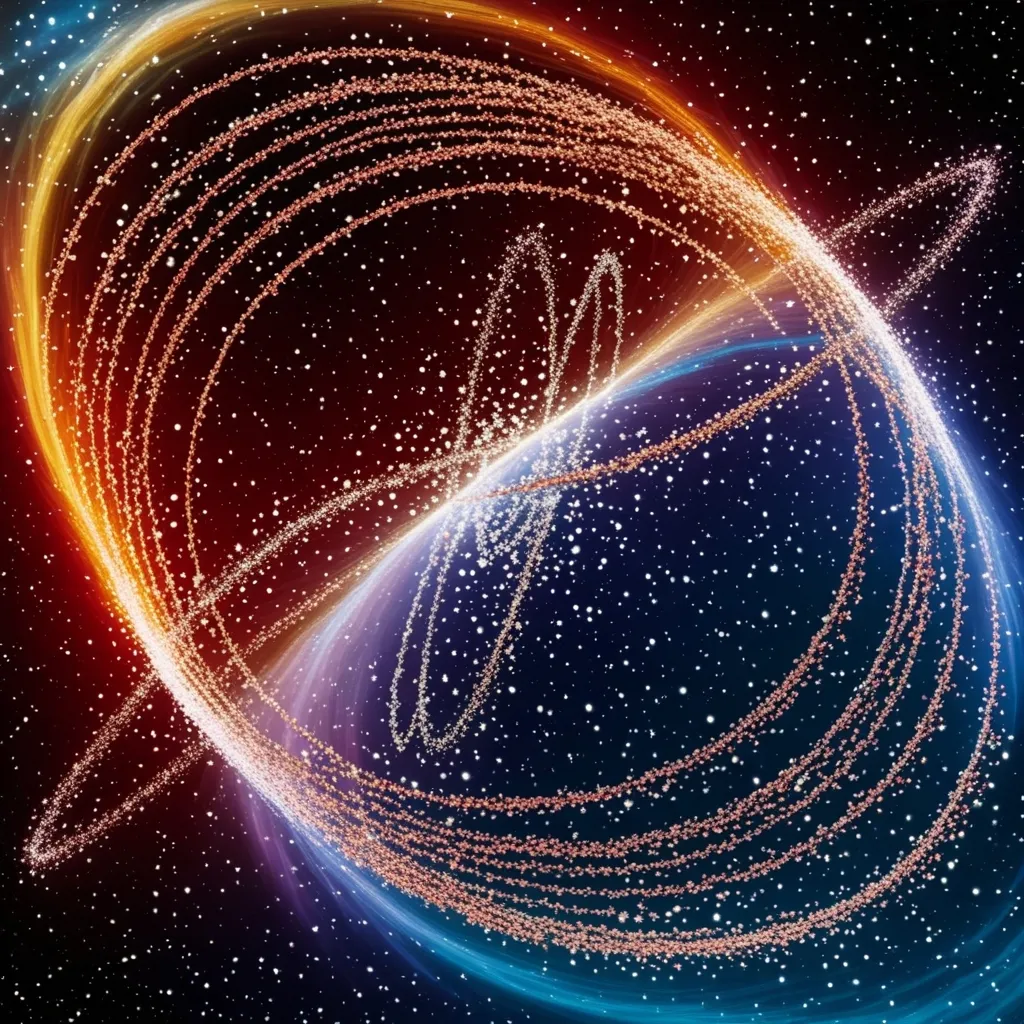Hey, I’m Nigel, and welcome to “Nigel Goes to Space.” Today, I’ve got an interesting question from Willow Roberts who wants to know about white holes. So, what exactly is a white hole?
To answer that, let’s start with what we already know: black holes. We know black holes are out there in the universe. They form when a massive star collapses under its gravity, getting smaller and tighter until it becomes a singular point, or singularity. This phenomenon is well-explained by Einstein’s theory of general relativity, which describes how black holes form and why they pull everything inwards.
Now, Einstein’s equations also suggest that this process could happen in reverse. Imagine time flowing backwards, and instead of everything pulling into the singularity, everything comes spewing out. This would be a white hole—a radiant blast of light and energy erupting from a single point.
In simpler terms, a white hole is like a cosmic fountain throwing out pure energy and radiation. According to the theory, perhaps a black hole in another universe collapses and its singularity erupts into our universe as a white hole.
But here’s the catch: astronomers haven’t actually spotted a white hole. The reason lies in the same equations that predict them. All that energy and matter coming out of a white hole would have its own gravity, which would eventually pull it back in, causing the white hole to collapse back into a black hole. So, we think a white hole can’t really exist. It’s a fascinating idea, but in the end, it seems a white hole would just become another black hole.
If you’ve got more questions about stars, the universe, or exotic phenomena like black holes, white holes, or even the Big Bang, feel free to send them my way. Keep tuning in.






